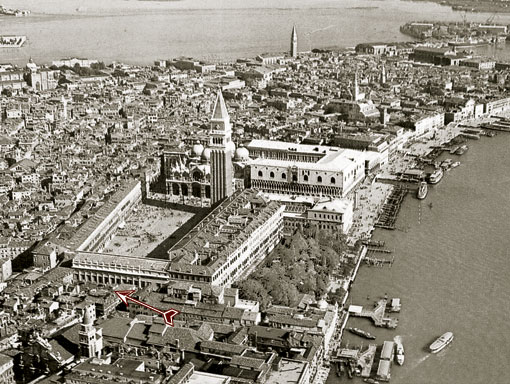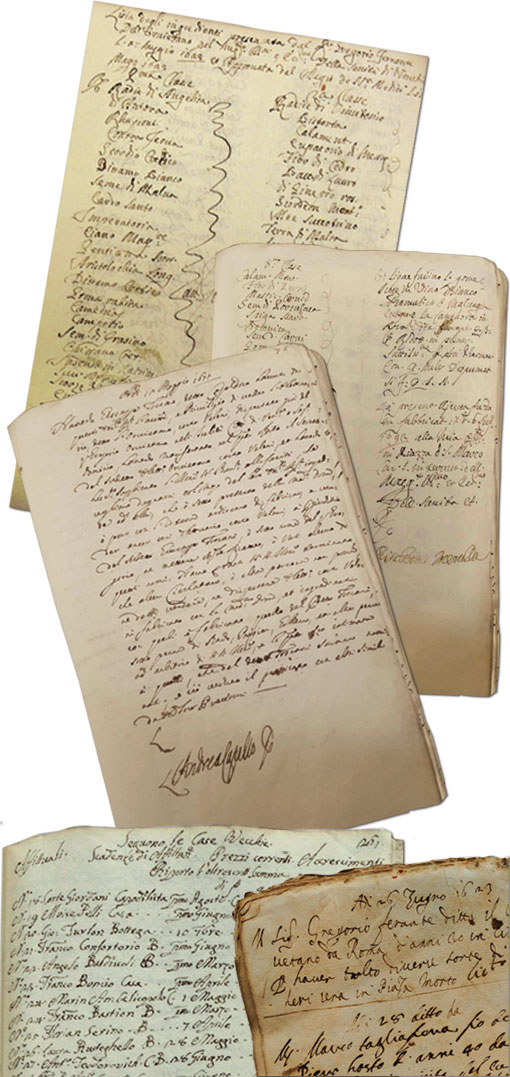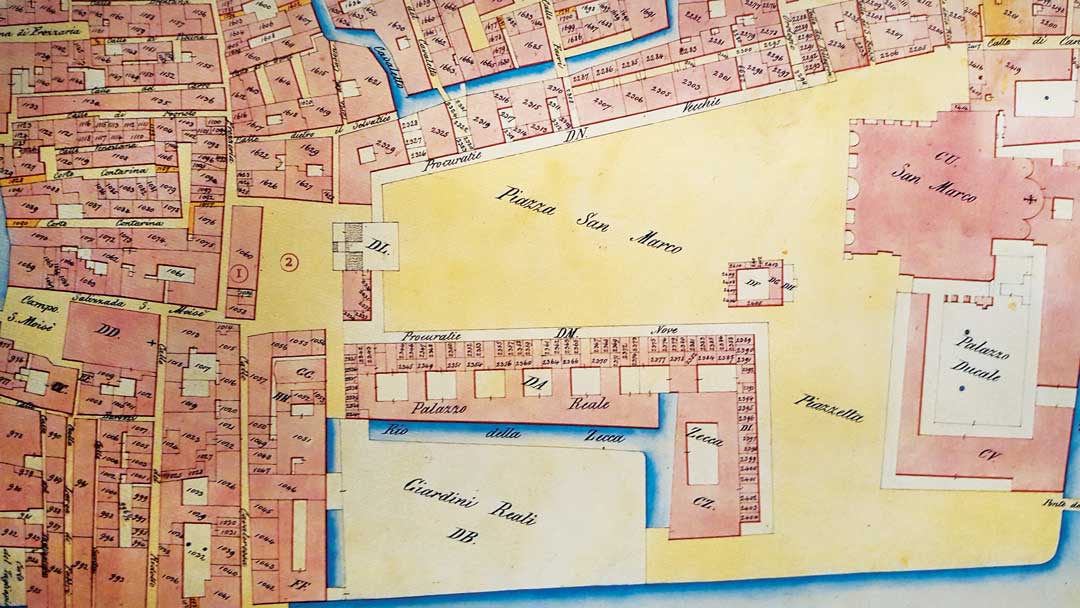The Orvietan in Venice
edited by Sabrina Minuzzi

A few years after the first sales licence was granted to Girolamo Ferrante in Orvieto, the Venetian history of Orvietano also began. At that time it was considered an antidote against various states of poisoning and, if taken in small doses, a substance with corroborating and restorative properties.
At the request of Gregorio Ferrante, Girolamo’s son, on 17 May 1623 the Medical College of the lagoon city examined and approved the medicine’s recipe. Gregorio was thus authorised to handle and sell it in Venice and all the territories of the Serenissima. Unfortunately, he was only able to make use of the licence he had obtained for a month, because he died at the age of thirty during a performance in St. Mark’s Square on 26 June 1623 after taking too high a dose of poison. But his house in Frezzeria, located behind the west side of St. Mark’s Square and teeming with commercial activities then as now, remained the home of Orvieto’s producers until the end of the 18th century.
On 15 May 1675, the Provveditori alla Sanità of Venice granted Giuseppe Merula/Merulla known as Capeldoro, a Tuscan, the right to handle and sell the Orvietano that had once belonged to Gregorio Ferrante, prohibiting anyone else from manufacturing the same drug and selling, perhaps under the same name, a forged prescription. This was a privilege and no longer just a licence, because it sanctioned an exclusive right in favour of Merulla: an indication that the Orvietano had become a very famous medicinal product, therefore liable to counterfeit and to be protected by a patent.
Since then, the vicissitudes of the Orvietano have been one with those of the Merulla family first and the Teodorovich family later: it is mentioned in wills as movable property and its secret recipe is passed from one family to another by marriage. It is a drug invented within a family whose members and descendants are involved in its production and transmission.
For thirty years, Orvietano was also handled and sold by a woman, Elisabetta, widow of Tommaso Merulla, son of the aforementioned Giuseppe, who died in 1731. In fact, as early as 1692 the Venetian health authorities had deemed Elisabetta fit to handle and sell Orvietano from her house-shop in Frezzeria. In 1761, by then over 80 years old, Elisabetta passed the privilege on to her daughter Angela and son-in-law Antonio Teodorovich.
From 1778 and until after 1792, the couple’s son, Francesco Teodoovich, a surgeon by profession, took over his parents’ business and practised it in the same house and workshop located behind St. Mark’s Square.

• Anno 1623 – Venezia, Archivio di Stato, Provveditori alla Sanità, Rapporti, b. 588
• Anno 1675 – Venezia, Archivio di Stato, Provveditori alla Sanità, Notatori, reg. 743, c. 76r
• Anno 1692 – Venezia, Archivio di Stato, Provveditori alla Sanità, Rapporti, b. 588
• Anno 1778 – Venezia, Archivio Storico Curia Patriarcale, San Moisè, Capitolo, Verbali e parti, reg. 1 Affitto di casa e bottega (C.B.) aumentato da 42 a 55 ducati, quando l’erede Antonio Teodorovich manipolava e vendeva l’Orvietano dalla stessa sede in Frezzeria, dietro piazza S. Marco.

Catastico Napoleonico. Dettaglio.
1) Casa e bottega dell’Orvietano: Gregorio Ferrante viveva dietro piazza S. Marco, nella parrocchia di S. Moisè. 2) Spazio in cui fino al Settecento sorgeva la chiesa di San Geminiano, ora occupato dall’edificio ottocentesco delle Poste.
Vieni a trovarci
05018 Orvieto [TR]
Via del Duomo 74
Orari al pubblico
Negozio: tutti i giorni ore 9-20
Laboratorio: visite su appuntamento
